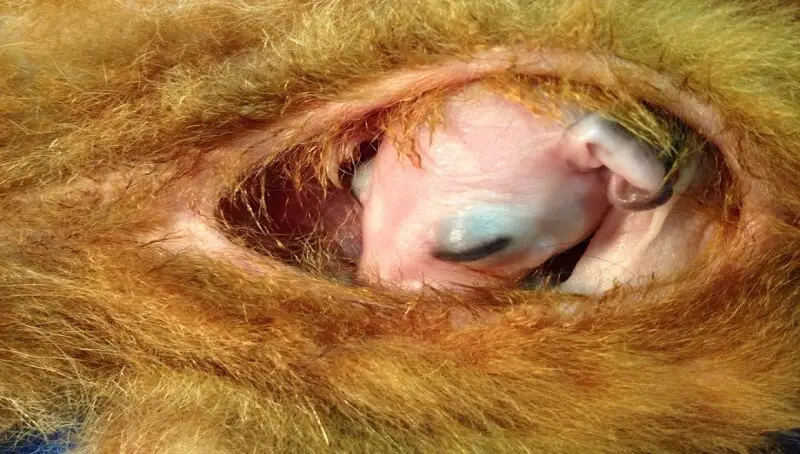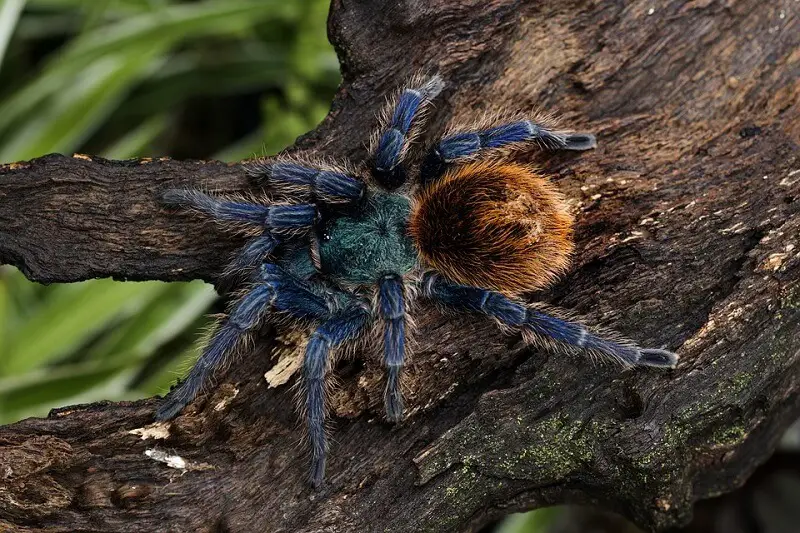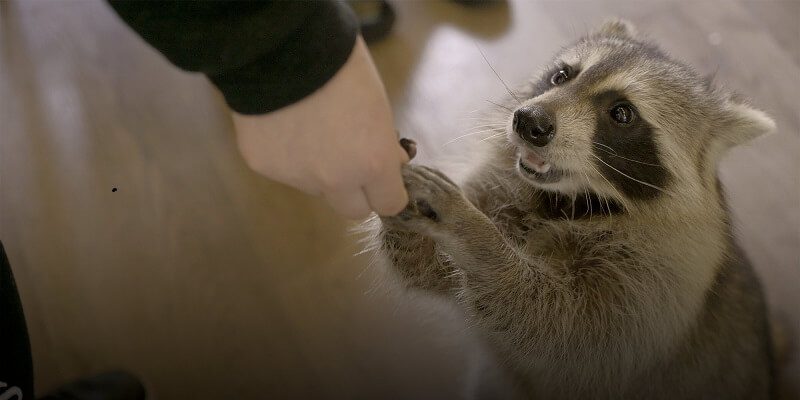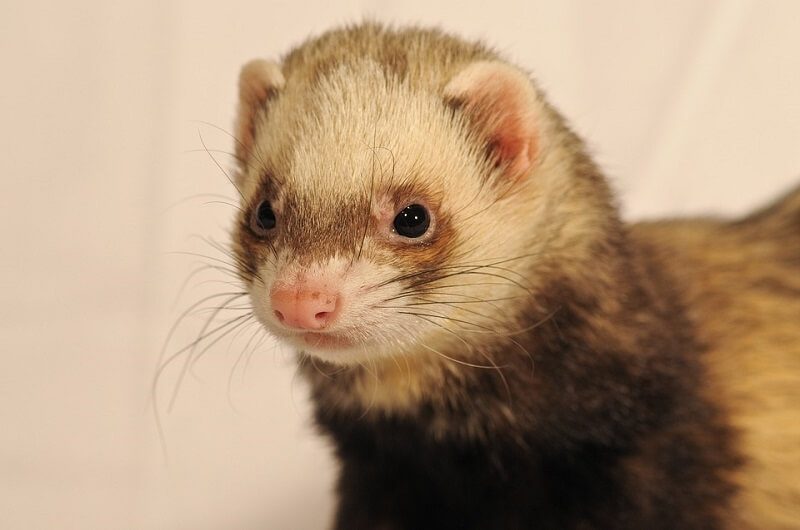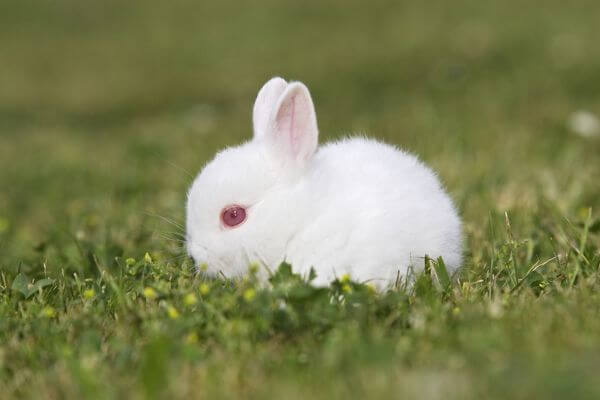You can’t say you’ve never seen a possum somewhere around you if you’re from the US. These are marsupials that can be seen mostly in America, where they prefer areas that are marshy, swampy, and wet.
The name of the marsupial family comes from the pouch that can be seen on their lower abdomens, called a marsupium. Although most people will know what a possum looks like and have most likely seen at least a couple of them in their lifetimes, there are many that still don’t know whether a possum has a pouch or not.
So do possums have a pouch?
Yes, possums have a pouch, just like all of the other marsupials. The thing that differs for possums as opposed to most other marsupials is that their pouch is slightly hidden, so it’s not really easy to see it. This pouch is very important for their reproductive activities, even though it isn’t as visible as the one of a Kangaroo.
The possum babies will be around the size of a peanut at birth, which makes them really vulnerable. They are far away from what you would call fully developed and won’t be able to live on their own. They would really be helpless without their mom’s pouch to protect them. They will need some time inside the pouch to grow enough, to receive warmth, protection, and nutrition from their mother.
You might also like my articles about squirrels, ferrets, or hamsters.
A dark fact about possums is that although a new litter will usually have around 20 babies, not all 20 will be able to reach the mother’s pouch, and only the ones that do (around half) will be able to stay alive.
This article will give you a lot of details on the possum’s pouch, its role in its reproduction, and other interesting pieces of information about possums.
What exactly is this pouch?
As you already know, possums are part of the marsupials family.
But before we can move forward, what exactly would be a marsupial? These are mammals that would give birth to live babies, which are then fed with milk from their mother.
The way in which the babies will actually develop while in the womb and after birth is what will set them apart from mammals like placental mammals or monotremes. The babies from a marsupial will continue to grow even after birth, in the pouch of their mother.
On the other hand, placental mammals are those with a considerably longer pregnancy period, during which the babies will develop inside the mother’s placenta, connected with an umbilical cord.
For marsupials, unlike other mammals, babies will grow only partially inside the womb, followed by an important growth period inside the mother’s pouch. The baby will stick to the mother’s nipples, this way staying attached to her body, in the pouch.
This means that although TVs portray marsupium as a convenient way for a mother to carry her children, this is hardly the truth. Instead, it is a way of keeping the babies alive while they continue to get nurtured and grow. These pouches are very complex reproductive parts, considered a miracle of nature.
Now let’s move forward on possums and their pouches.
The possum and its reproductive system
Let’s figure out how the possum’s reproductive system works, so we have a better understanding of its marsupium or pouch.
A female possum will have a reproductive system that is comprised of a bifurcated genital organ, divided into the uterus and the marsupium (or the pouch). The male will also feature a bifurcated reproductive organ, and these creatures will reproduce by copulating. The short-life placenta in the mother’s womb is what sets these creatures aside from other animals.
The placenta of possums will usually break pretty easily and won’t be fully functional, unlike the placenta of other mammals. This is the main reason why the female possum won’t be able to keep the babies in her uterus for a long period of time.
This means that the gestation period for possums will be a lot period, only about 14 days, after which the female will give birth to babies that will be in a very early stage of development. The babies of a possum, right at birth, will look more like embryos than fully developed babies, with a size of a peanut. Right after birth, these tiny possums will have a really short timespan to reach their mommy’s pouch if they want to stay alive.
Why does a possum have a pouch?
As I’ve said above, a possum doesn’t have a functional or even fully developed placenta. This is why it will be virtually impossible for it to carry its babies inside the uterus and provide them with the needed nutrients for normal growth.
Possum babies are very small, around the same size as a peanut, and they will have to get into their mother’s pouch right after birth to have any shot at life.
The rest of the development up until the babies are big enough to survive on their own will happen in the pouch. They will have to move through the fur to reach the marsupium.
When inside the pouch, they will get attached to the body of the mother. They will use the front paws and their mouths to hold as tightly as possible onto the teats. They will then feed on the teats, getting all of the nutrients that other animals would usually get through their umbilical cord.
Although a mother possum will usually give birth to around 20 babies in one litter, not all of them will survive because not all of them will be able to find the pouch. This is something that requires strength and is a way evolution has made sure that only the strongest possums get a chance to live. About 50% of each litter will survive.
How long do the baby possums stay inside the pouch?
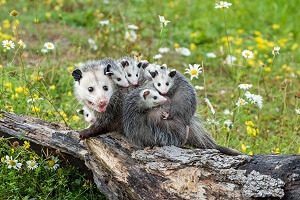 I should also add that the tiny babies that reach the pouch won’t be able to see or hear anything and their bodies will be completely furless. They will stay attached to their mother’s teats inside the pouch for around 2 months while they grow and get all the nutrients they need.
I should also add that the tiny babies that reach the pouch won’t be able to see or hear anything and their bodies will be completely furless. They will stay attached to their mother’s teats inside the pouch for around 2 months while they grow and get all the nutrients they need.
After about 2 months, the babies are ready to come out, having developed their hearing senses and vision. When it’s their time to get out, they would have outgrown the pouch, becoming considerably bigger. They don’t come out in one go. Instead, after 2 months have passed, they will slowly start to come out but only for short periods of time at first.
When the mother won’t be able to keep her babies in the pouch they will get out but will continue to hold onto her fur for a little while before moving on their own.
Before they are ready to discover the world around them on their own, they will usually need another month on their mother’s fur. Two months in the pouch and one month latching on to the fur will mean that the possum babies will be ready to become independent three months after they are born.
Do male possums have a pouch?
It does happen from time to time that a marsupial male will have a pouch but this will be a really rare occurrence. It is the females who have the pouch. In the case of the water opossum though, which is a relative of the possum, all of the males will have a pouch. You should know that although males will have pouches from time to time, those won’t be used to carry any young babies like in the case of females.
For male marsupials, the pouch would be mainly used as a way of protecting the genitals from vegetation.
Is it safe to check the pouch of injured or dead possums?
Yes, it is usually safe to check a possum inside the pouch, if you notice one on the road either injured or dead. It’s an issue for possums to maintain a normal temperature inside the pouch during the spring and summer months when it starts to get hot.
They depend on other ways to regulate their body temperature, considering that they don’t have a system to do this themselves. This means that they would usually move a lot more during the hot months, which takes them closer to human communities most of the time. This, of course, will be pretty risky for them.
Getting close to humans is dangerous for them mainly because they risk getting injured by dogs or vehicles. It would be great if you checked the pouch of a possum that you find lying on the side of the road, especially during the hot months.
There is a chance that you will find some baby possums in there that would still be alive. Handling both the possum and its babies is completely safe, so you don’t have to worry about anything.
In some situations, you might find alive babies even when the mother has died. They don’t have a lot of time for someone to save them, so make sure you don’t wait too long.
Getting the help of a veterinary if the possum is hurt or if there are babies in the pouch is usually the best thing you could do.
